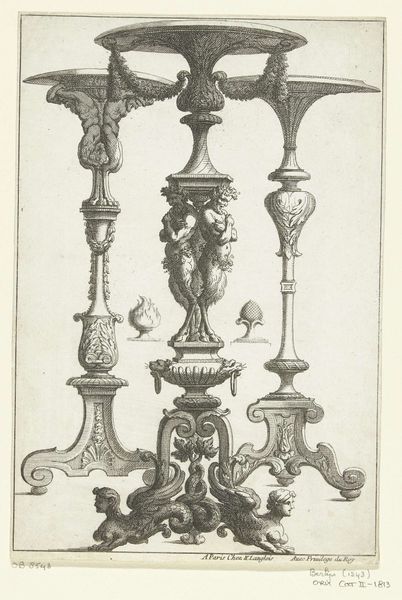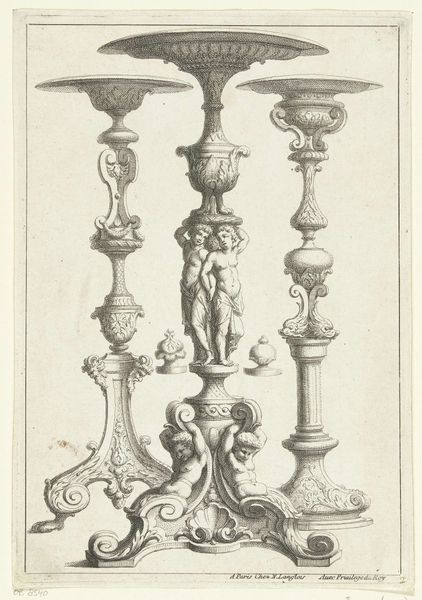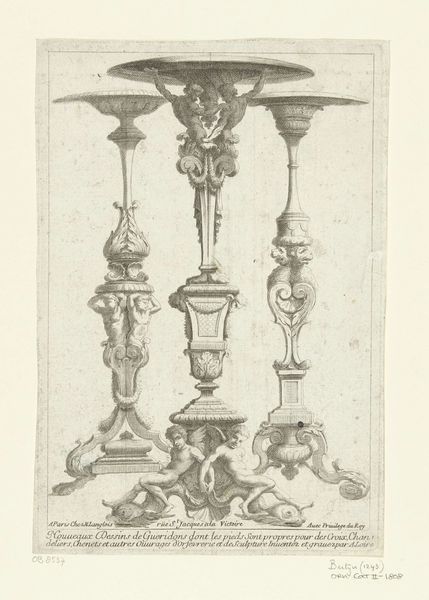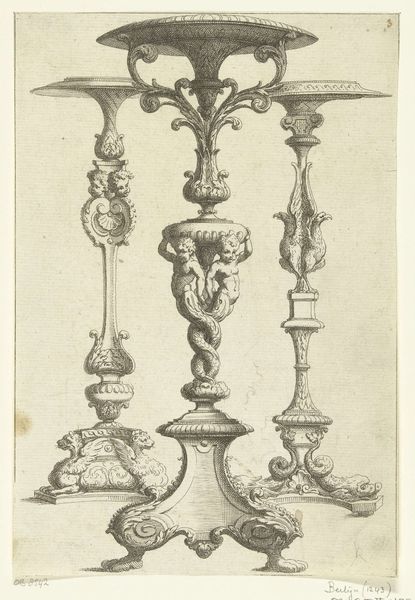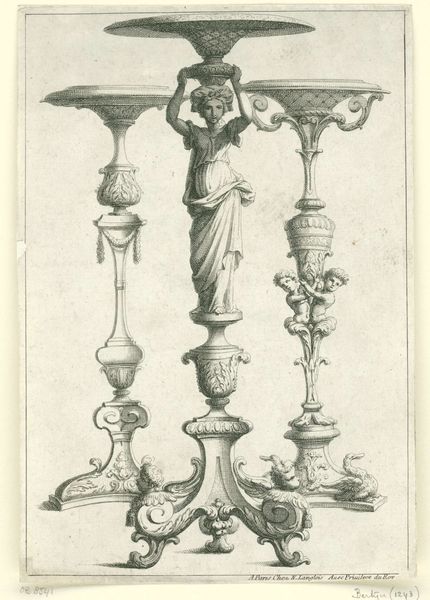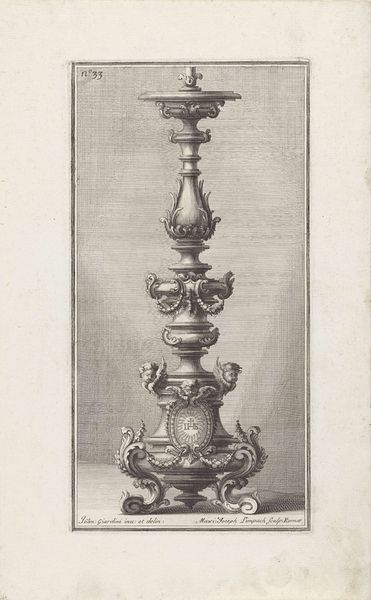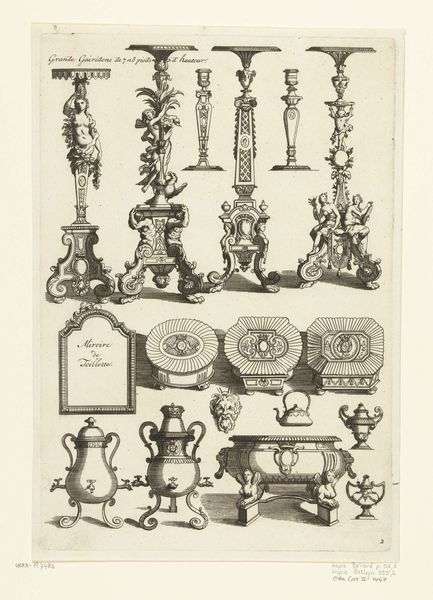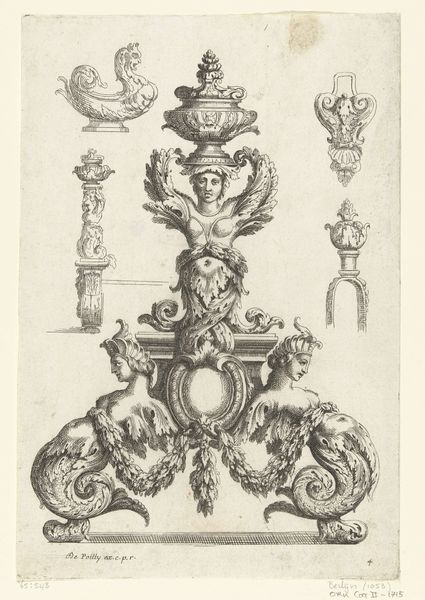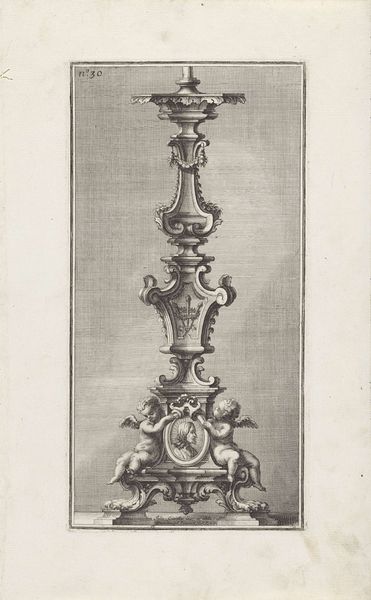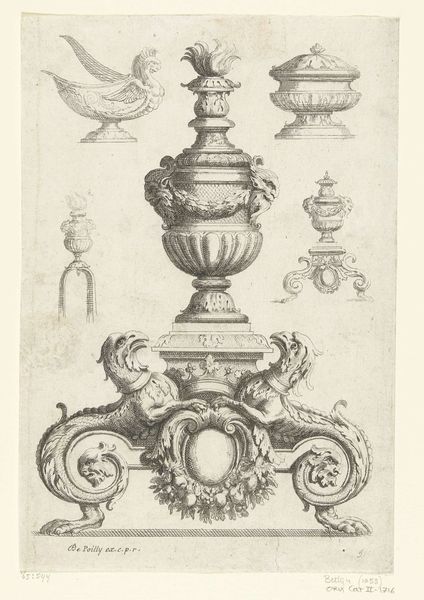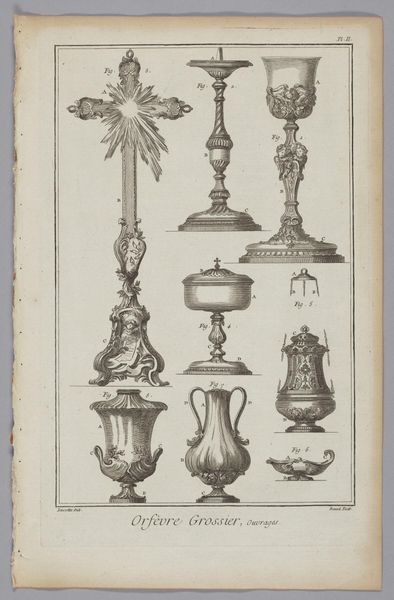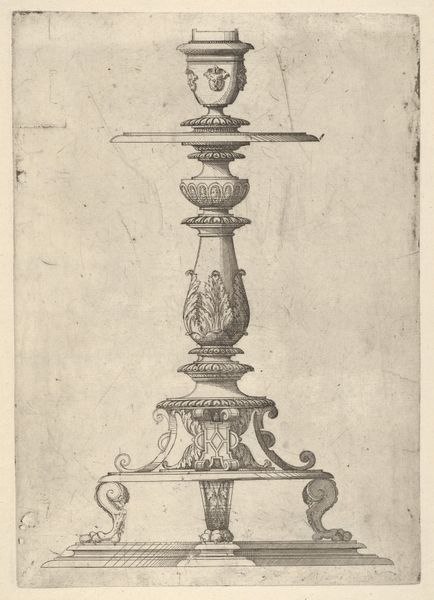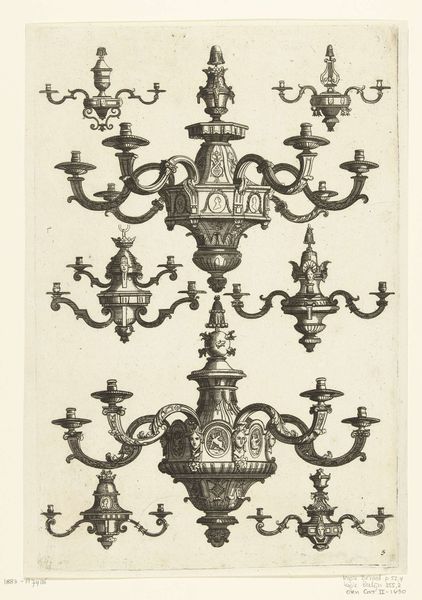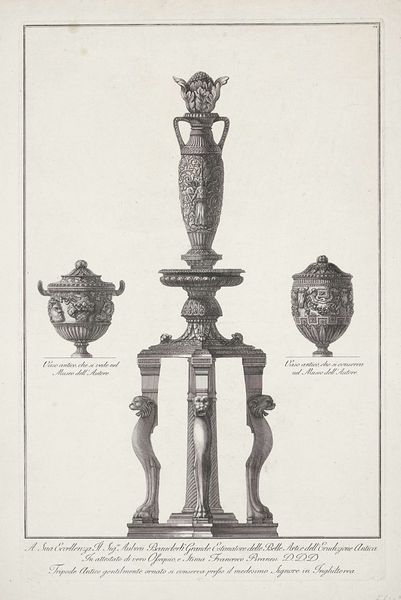
metal, engraving
#
baroque
#
metal
#
old engraving style
#
decorative-art
#
engraving
Dimensions: height 230 mm, width 156 mm
Copyright: Rijks Museum: Open Domain
Editor: So here we have "Three Candlestick Bearers" by Alexis Loir, created before 1692. It’s an engraving, so quite different from what we mostly see around the museum, as these are often sketches made of metal artworks to inspire those patrons who seek custom pieces. What draws your attention when you look at this? Curator: I'm immediately drawn to the social implications embedded in these designs. These aren't just candlesticks; they're statements of power and status. The Baroque style, with its ornate details and theatrical flair, speaks to a specific cultural moment. Considering Loir made these for the royal silversmith, what level of craftmanship, precious materials and thus access to the candle light, was he catering to? Editor: You’re right, I hadn’t really thought about how having candle light would have been a statement. It also looks like it pulls from classical architectural elements, how do you read this design choices? Curator: Precisely. The integration of cherubic figures and classical motifs wasn’t accidental. It was a conscious effort to link the French monarchy with the grandeur of antiquity. Think about the function of art during that period—it was primarily for the glory of King Louis XIV. He deliberately made use of his court artists and artisans. The candelabras exemplify this, being instruments for a display of magnificence and, subsequently, political dominance. Do you notice the small signatures at the bottom corners? Editor: Yes, what are those? One seems to say “privilege of the king”.. Curator: It speaks of the control exercised by the state over artistic production and distribution, confirming authenticity, and reinforcing the monarch’s influence. These details allow us to understand how these objects reflect and reinforce social hierarchies of the time. Editor: I never thought of it that way. Seeing them as part of that system of control. So, from this we could learn not to view art objects in isolation, but within broader societal structures, even something as simple as a candlestick? Curator: Exactly! Art acts as a visual marker, documenting and solidifying these systems of power. It makes you question the power dynamics that shape not only art creation, but also its display, interpretation and even today's museum context.
Comments
No comments
Be the first to comment and join the conversation on the ultimate creative platform.
